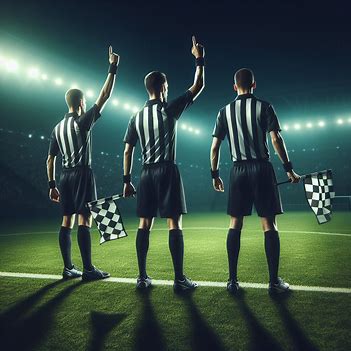Speed, a significant factor for the Performance of Field Soccer referees.
DOI:
https://doi.org/10.56124/sapientiae.v7i13.0007Keywords:
Physical training, Soccer referees, speedAbstract
Football throughout history becomes more exciting every day and with great demands not only for the players but also for the referees, all due to the physical demand that is made in a match. In this particular, one of the physical qualities in greatest demand within the match is the same speed that was studied in the Manabí soccer referees, because it allows them to follow the players, make quick decisions and prevent injuries. It is pertinent to determine the activities that allow the speed of soccer referees to be strengthened and contribute to the objective of ensuring that they have the best possible performance on the playing field. In fact, this research seeks to carry out a diagnosis of the physical quality of speed in professional soccer referees in the Province of Manabí. The research has a non-experimental design, and has a quantitative approach. The theoretical methods used will be Inductive Analysis-synthesis -deductive, Hypothetical-deductive, Historical-logical and empirical methods will be Test/physical tests such as: Speed test (Referees 40 m Maximum of 6”, The population is 8 referees of first category A and B of the Association of Referees of Manabí football, in it it was determined that the subjects are in good physical condition because they passed the minimum required time, however, it is necessary to carry out strategies specific to the development of speed to adapt to the times of the referees with FIFA rosette that have values well above the arithmetic mean, which is why it is recommended to train more frequently to be able to achieve the values compared to world standards.
Downloads
References
Bustos-Viviescas B.J, Rodríguez-Acuña LE, Acevedo-Mindiola AA. (2017) Asociación entre la agilidad y la velocidad con cambios de dirección en jóvenes futbolistas. Rev.Ib.CC. Act. Fís. Dep. 6(3):57-67.: http://www.riccafd.uma.es/DOCUMENTOS/articulos/VOL006/n3/Bustos_Cambios_Direcci%C3%B3n_F%C3%BAtbol.pdf
Castillo, D., Cámara, J., y Yanci, J. (2019). Efecto de un periodo competitivo sobre el perfil antropométrico de árbitros de fútbol. Revista Internacional de Medicina y Ciencias de la Actividad Física y del Deporte, 19 (73), 93-105. DOI: 10.15366/rimcafd2019.73.007
Guerrero, J., Pinto V., Pérez W. (2016) Fuerza rápida y velocidad en árbitros de fútbol. Revista Salud, Historia. 11 (3): https://agenf.org › ojs › index.php › SHS › article › view
García Vázquez, J. V. (2017). Optimización del entrenamiento del árbitro de fútbol. [Tesis de maestría. Universidad de León. España]. Repositorio Institucional de la Universidad de León. Curso académico 2016-2017
Grosser, M. (1992). Entrenamiento de la velocidad. Ed. Martínez Roca, Barcelona.
Hernández, R. Fernández, C. y Baptista, M. (2014) Metodología de la investigación, editorial Mac Graw Hill Educación. Sexta edición. México.
López-García, R., Lagunes-Carrasco, J. O., Carranza-García, L. E., Ródenas-Cuenca, L. T., y Morales-Corral, P. G. (2021). Características morfológicas en árbitros de fútbol profesional en México; Antropometría y dexa. Revista Internacional de Medicina y Ciencias de la Actividad Física y del Deporte, 21(81), 117-129. https://doi.org/10.15366/rimcafd2021.81.008
Maita, J; Bravo, W; y Barrachina, G. (2022) Análisis comparativo de los métodos de entrenamiento de árbitros de fútbol profesional. Revista científica Dominio de la ciencia Vol. 8 (3). 1994-2018.
Mariño Guerrero, J. J., Melgarejo Pinto, V. M., Padilla Pérez, W., Cepeda, T. P., & Neita, M. A. (2017). Fuerza rápida y velocidad en árbitros de futbol. Revista Salud, Historia Y Sanidad, 11(3), 110–118. https://agenf.org/ojs/index.php/shs/article/view/25
Medina S. y Guerrero W. (2023). La preparación física en la velocidad de reacción en los arqueros en la Academia de Fútbol AKC del cantón Baños de Agua Santa. [Tesis de grado. Universidad Técnica de Ambato, Ecuador]. Repositorio institucional de la UTA. https://repositorio.uta.edu.ec/handle/123456789/39377
Mundo silbato (2017). Importancia del entrenamiento en el árbitro. https://www.mundosilbato.es › blog › importancia del entrenamiento en el árbitro.
Ponce, O. A., Gutiérrez, M., y Valdenegro, R. A. (2018). Estudio sobre el burnout deportivo y su incidencia en el arbitraje en el fútbol (Revisión). Revista científica Olimpia, 15(51), 181-195. https://revistas.udg.co.cu/index.php/olimpia/article/view/517
Sainz, J. M. (2006). Análisis del rendimiento físico de los árbitros y árbitros asistentes durante la competición en el fútbol. [Tesis Doctoral. Universidad Politécnica de Madrid]. Repositorio institucional de la UPM. https://doi.org/10.20868/UPM.thesis.447

Published
How to Cite
Issue
Section
License
Copyright (c) 2024 Revista Científica Multidisciplinaria SAPIENTIAE. ISSN: 2600-6030.

This work is licensed under a Creative Commons Attribution-NonCommercial-ShareAlike 4.0 International License.

2.jpg)


















